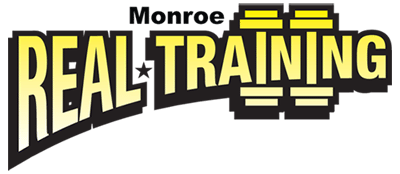What Underpins shoulder strength?
When I was making great progress with my fitness regime, a full workout would consist of bench press with 66lb (30kg) dumbbells, wide push-ups, overhead press with weights, and squats with resistance bands.
There was a time when instead of the usual satisfying muscle soreness, I was experiencing shoulder pain, and restricted mobility in both arms. I remember one arm was more painful than the other. Most people would have seen their General Practitioner (I always recommend doing so), but I decided to do some of my own research instead. I had pain in my arms each time I tried to reach for anything, especially above head height. I also suffered pain when lifting light items (e.g. a hair brush).
I learned that 90% of shoulder pain was linked to rotator cuff problems. This is the group of tendons that support and stabilize the shoulder joint. Each tendon is attached to muscles responsible for arm movement.
Above Image by Alila Medical Media/Shutterstock.com
The pain and weakness I was experiencing, closely matched the symptoms of rotator cuff damage. I tried to assess my shoulder by doing a ‘drop arm test’ to determine if I could control the movement. This involved my arm outstretched and then gently lowering it to my side. You should be able to control the movement of your arm when doing this motion – I was not able to do so. I also read that a rotator cuff tear could never be healed, and that surgery was the only option.
Despite this, I was still determined to find an alternative solution. I discovered a method called ‘progressively weighted dynamic stabilization’. This involved using 4 weighted balls that were attached to a handle.
After the pain had subsided, I began a routine starting with the lightest ball, rotating 30 times clockwise, and then 30 times anticlockwise in 3 positions:
1. Arm outstretched in front of the body
2. Arm to the side
3. Arm pointing to the floor.
I did this routine every day for 4 weeks increasing the ball weight each week as recommended. Each movement takes only seconds. So, an entire routine takes just a few minutes.
I noticed an improvement within a few days. I had more stability in my shoulder and regained my range of motion. I was pain-free after a few months, and felt a lot stronger than post injury. The main drawback was the weighted ball did not always remain firmly attached. I was able to secure this with tape.
There is much debate about how heavy the weights should be when doing rotator cuff strengthening. There are people on forums that have used 11lb (5kg) dumbbells which is heavier than the recommended 3-4lbs (1.3kg – 1.8kg).
After approximately 7 months, I was able to return to my usual routine of weight training and had more precision and control. I realized that rotator cuff exercises were not just for rehab, but for regular use before and / or after each workout routine.
I’d recommend a rotator cuff routine as part of your warm-up. Not only could it strengthen your shoulders — it could help prevent injury, too. I actually do this routine every other day.
This experience has highlighted the importance of training for stability, and the need to exercise the smaller and more often neglected muscles. Once you acknowledge and embrace the pivotal role of the smaller muscles, and understand that they can work in harmony with the larger ones, you can then build a much stronger foundation.
References
Rotator Cuff Tendonitis, (2012) Rotatoreliever. Shoulder Pain. How is shoulder pain diagnosed?
Available: http://www.rotatoreliever.com/press/shoulder-pain/ Last accessed 28th November 2015.
Definition of Rotator cuff. Available: http://www.medicinenet.com/script/main/art.asp?articlekey=8195
Last accessed 28th November 2015.
Drop arm test. Available: http://medical-dictionary.thefreedictionary.com/drop+arm+test
Last accessed 28th November 2015.
- Could improving my Immune health also combat COVID-19? - August 2, 2020
- The Power of being Present. - May 10, 2020
- Magnesium – The magnificent mineral. - March 1, 2020



